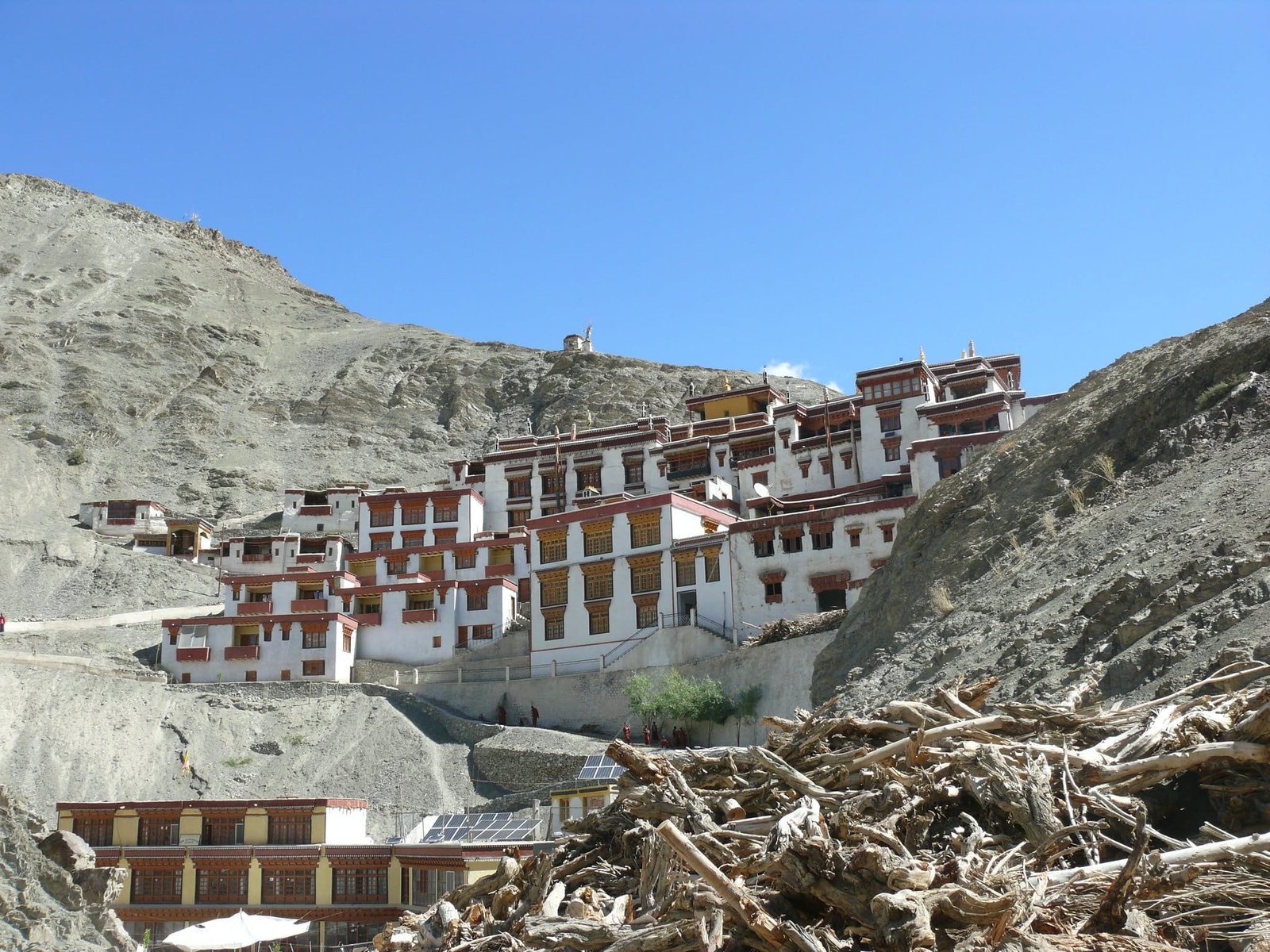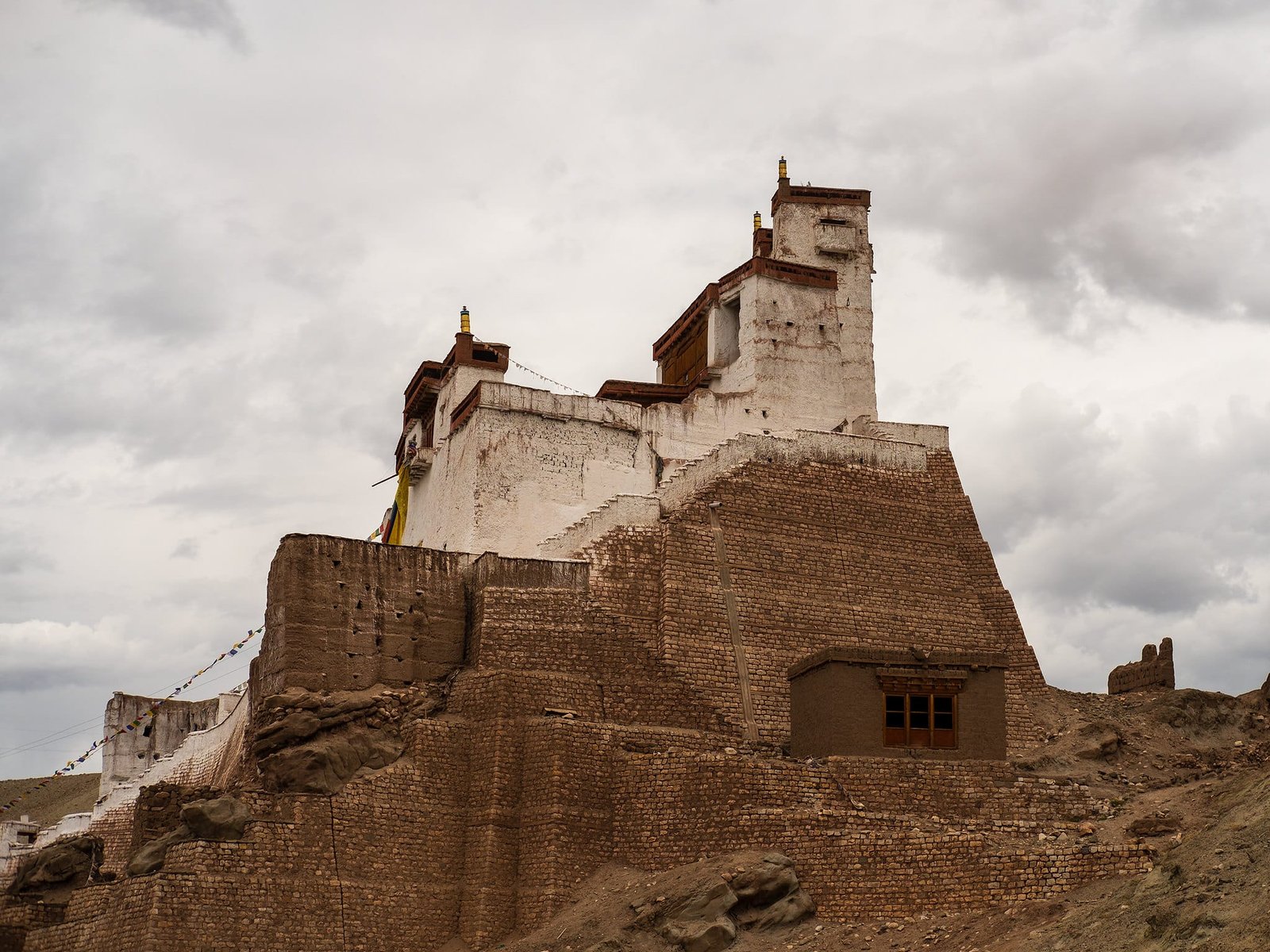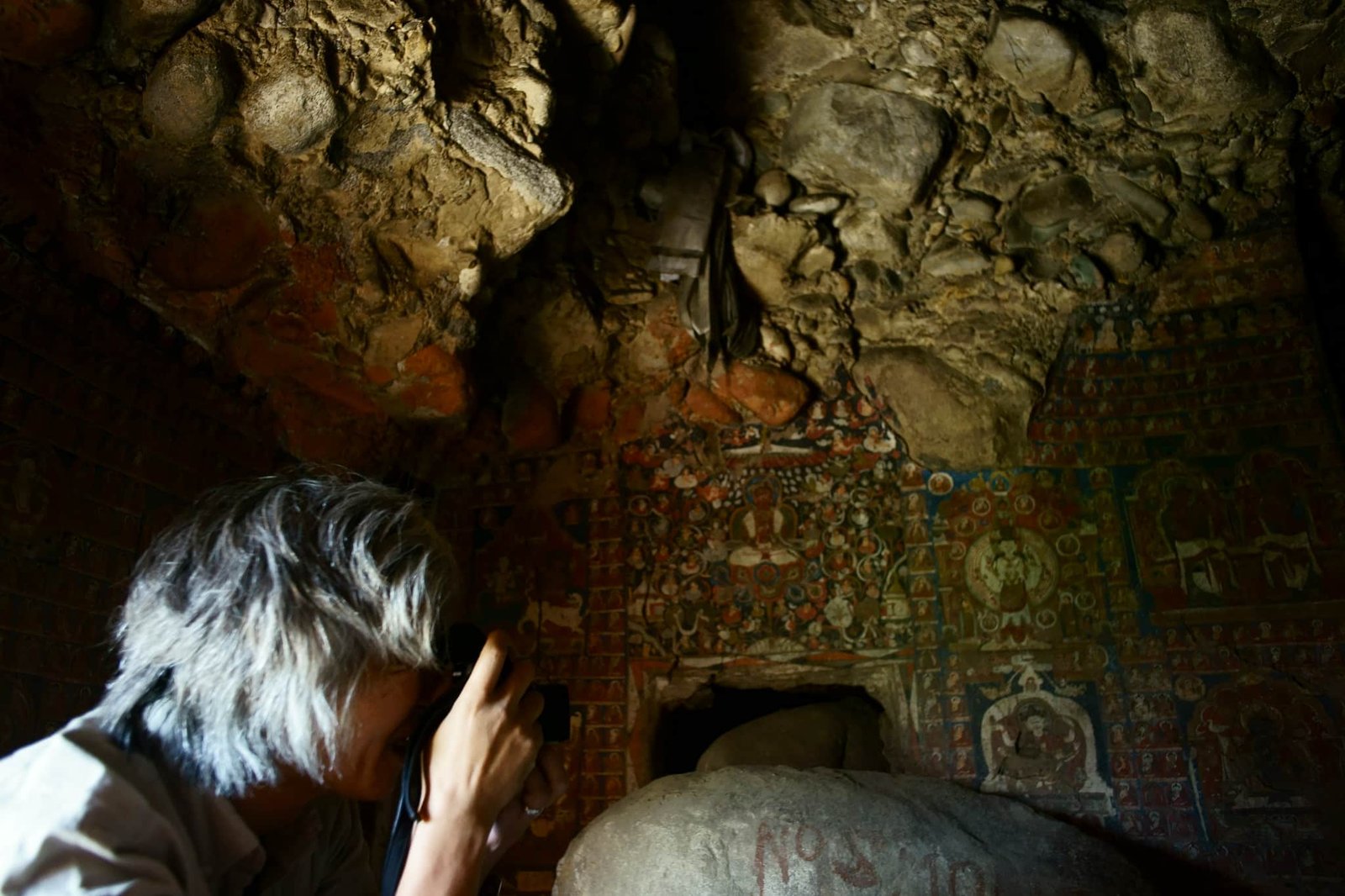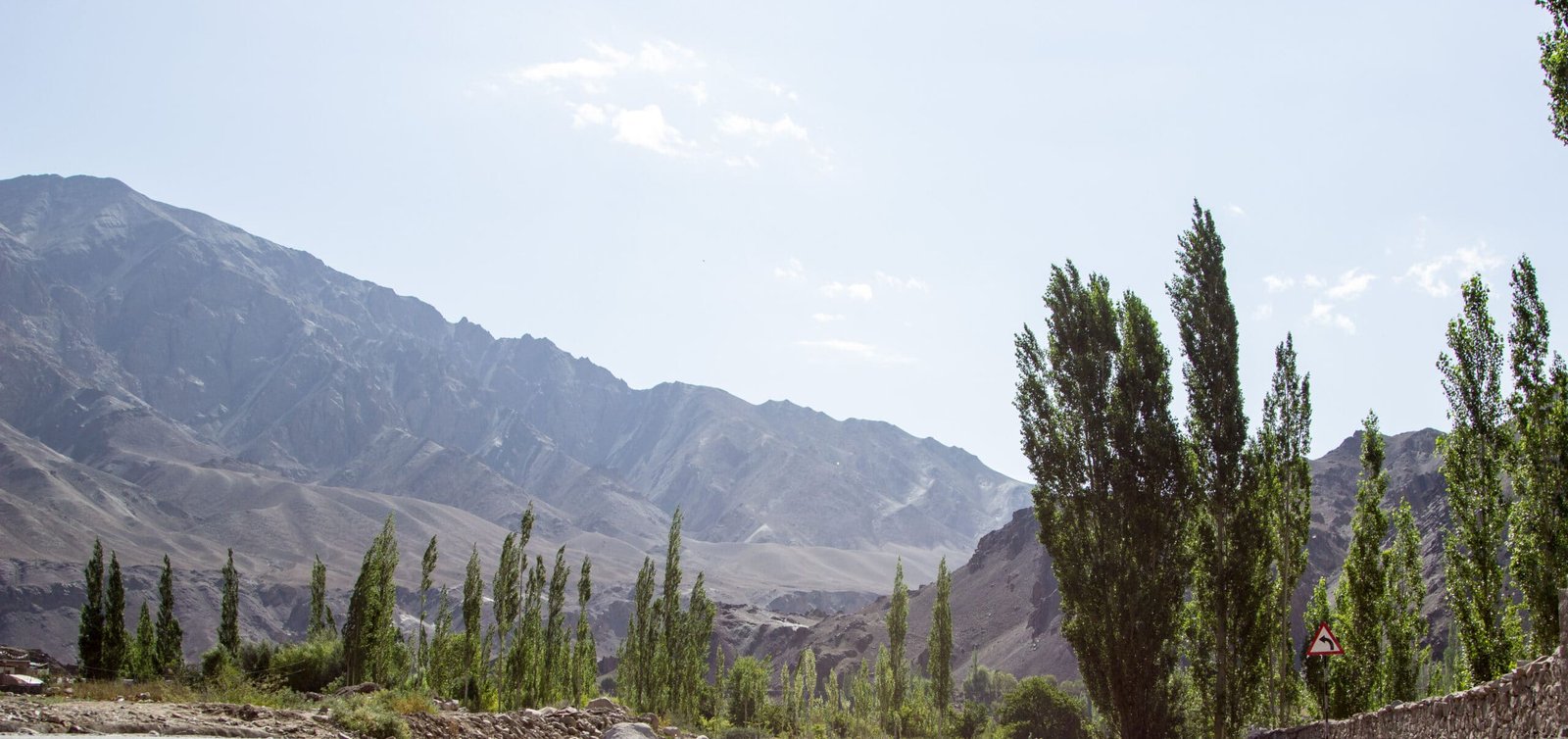Sham Valley Ladakh
Overview
In the western part of Ladakh lies a beautiful valley, the Sham valley. Often referred to as the Lower Ladakh or Apricot Valley it is situated very close to the town of Leh. Renowned for its Beautiful countryside, Buddhist temples and the traditional communities.
One of the most visited places here is the Alchi Monastery that has a numerous number of settlements including Likir, Basgo. Said to be constructed in the 16th century, the blend of the Indian and Tibetan architecture traditions in a unique way which is most liked by the tourists here in Basgo Palace.
The Likir monastery dates to the 11th century and is well known for its old scriptures and murals. Ladakh known as the Land of high passes is a haven for the road travelers. Sham valley crosses through the Srinagar-Leh highway and is unquestionably a must addition to your Ladakh trip.
You will cross some villages like Saspochey, Uley, Hemis, Shukpachan during the day. It is around a distance of 160-170 km from Leh for a complete round trip. This valley is at an elevation of 3200-3700m from the sea level and while you drive through the route you will come across views of the Indus River, striking mountain ranges and meadows with traditional Ladakhi dwellings.
Other than these historic sites, it has a number of fruit orchards, especially the apricot trees are the famous ones. Other activities that can engage the tourists are river rafting, hiking and mountain biking. For a comprehensive guide, check out Things to do in Sham Valley. Travelers also trek called the Sham Valley trek or the Baby trek that takes 3 days to complete.
This is an easy grade trek that covers a distance of 32km and can be done throughout the year. If you want to extend your trek to more than one or two days then hike to Rizong monastery from Yangthang and/or walk from Temisgam to Khaltse.
Best Time to Visit Sham Valley Ladakh
The summer months from May to September is said to be the best time to visit the Sham Valley. The weather remains pleasant with less road blockage.
Be well prepared to carry warm clothes as well, the temperatures drop sharply at night here in the high altitudes. Also, during this time, the spring is in the late phase or end of the season that leads to the blooming of the apricot flowers in the fruit orchards.
This blooming view adds an ice on the cake with very beautiful landscapes. Summer time is the best time to visit Leh Ladakh is from april to august.
The temperature ranges between 15-20 degree centigrade making it more suitable for all outdoor adventurous activities. One of the most popular festivals, the Hemis festival in Ladakh is one of the major cultural events that usually takes place in June or July where you get to explore the traditional Ladakhi culture and heritage.
While in the winter months it makes it difficult to travel as the roads get blocked due to the snow and the harsh weather conditions make the temperature drop below the freezing ones.
It makes the travel difficult with more traffic and the access to different outdoor activities is denied. In the summer season the beauty is at its peak with more access to every event and activity.
Places to Visit in Sham Valley
Gurudwara Pathar Sahib
Devoted to the founder of Sikhism, Guru Nanak Dev Ji, the holy Sikh temple Gurudwara Pathar Sahib is situated in the Sham Valley which is around 25 kilometers from Leh.
Elevated at a height of 3,600 meters this holy location is surrounded by the breathtaking Himalayan landscapes.
Guru Nanak is said to have visited this location and defeated a demon that was creating havoc in the neighborhood.
When the demon threw a big rock called Pathar at Guru Nanak then it touched him and unbelievably it became soft like wax and seemed like imprinting his body. Later a gurdwara was built here in his honor.
This rock is a center of worship that is kept intact in the gurdwara. In addition to travelers of all faiths, Sikhs use it as a popular pilgrimage location.
Serving free meals to everyone the langar (community kitchen) upholds the Sikh values of equality and selfless service.
A special fusion of spiritual comfort and natural beauty can be found in the gurudwara’s serene surroundings and the breathtaking neighboring mountains.
Magnetic Hill
The Magnetic Hills which is located around 30 kms from Leh and 5 km ahead of Gurudwara Pathar Sahib is the next point of interest. The army has placed a large signboard on the road that makes it easy to find.
Also called the gravity hill crosses along the Leh-Kargil-Baltic National Highway. This enigmatic road segment produces an optical illusion that seems to defy gravity.
Because of a natural phenomenon that causes items including cars to appear to be moving uphill when they are sliding downwards.
When the brakes are removed, cars that are parked at the designated place on the hill appear to roll uphill against gravity.
It’s thought that the hill has magnetic qualities that draw cars to it. An optical trick called a “gravity hill” fools the eye into believing that a car is ascending the hill on its own.
Tourists frequently visit this location to witness this unusual event. When the weather is nice and the roads are clear, May through September is the ideal time to come.
Sangam Point
Located 3 km ahead of Magnetic hill, and approximately 34 kms from Leh lies Sangam point.
The Zanskar River which rises in Zanskar Valley and the Indus River which originates in Tibet converge and merge at this beautiful point.
The popular Chadar Trek begins at Zanskar River. This is also called the confluence of Indus and Zanskar river and this scenic location is 4km away from Nimmu Village.
The two rivers’ striking differences in color—the Zanskar is a rich shade of green, while the Indus is a pale blue—make the confluence a well-liked tourist destination and an impressive sight.
At this location the visitors can also go rafting on the Zanskar River that runs from the month from June to September.
The Sangam Point which is surrounded by towering mountains provides amazing views that are ideal for nature lovers and photography enthusiasts.
Both the rivers are considered very sacred and regional rites along with ceremonies are performed at the riverbanks.
Likir Monastery
Situated in Likir hamlet in Ladakh’s Sham Valley a Buddhist monastery called Likir Monastery is well-liked by tourists and one of the biggest and oldest monasteries in Ladakh.
The monastery is located around 52 kilometers to the west of Leh, perched on a hill and providing expansive views of the surrounding countryside.
Found in the eleventh century by Lama Duwang Chosje, its striking 23-meter-tall statue of Maitreya Buddha, which is a source of calm and spirituality that can be seen from a distance.
The statue which is made up of clay and gold is believed to have been constructed to honor the Ladakhi warriors’ triumph against the Kashmiri forces in the fifteenth century.
It is home to about 120 monks where this monastery is a bustling hub of religious practice and instruction. Observing the daily prayers and ceremonies gives visitors an insight into monastic life.
Dosmochey is an annual festival that takes place in the month of February and draws people from all over the world with its traditional mask dances and ceremonies.
Alchi Monastery
Situated on the banks of the Indus River in the charming village of Alchi and is around 67 kilometers from Leh town and a UNESCO World.
Heritage Site, the Alchi monastery is renowned for its historic Buddhist buildings and artwork.
Established in the tenth century by the renowned Tibetan scholar Rinchen Zangpo and is distinguished by its stunning antique wall murals that are uncommon in Ladakh and its distinctive architecture in the Kashmiri style.
The primary features inside the monastery complex include the 4 temples- Sumtseg, Lotsabha Lhakhang, and the Manjushri Temple among other temples and chortens (stupas).
The Sumtsek is the main temple which is a three-story building that combines Tibetan and Indian architectural design elements.
Rizong Monastery
Established by Lama Tsultim Nima in 1831 the Rizong Gompa is 73 kms from Leh. The Gelukpa order is followed at Rizong Monastery which is renowned for its strict observance of monastic discipline.
The great Tsongkhapa’s teachings are upheld in the monastery.
There are currently about thirty students enrolled there that are between six to fifteen. The abbot of the monastery is Rizong Shas Rinpoche. Also sometimes called the “Paradise for Meditation”.
The theological and artistic significance of the ancient scriptures, statues, and thangkas (Buddhist paintings) housed in the Rizong Monastery make them noteworthy.
Discover the serene surrounds of Rizong Monastery and stop by the beautiful mural-adorned assembly hall, also watch the monks go about their daily routines.
The monastery’s solitude and surroundings of breathtaking scenery add to its allure as a haven for spiritual renewal.
A visit to the adjacent Nunnery called Chulichan (Chomoling), which is home to about 20 sisters, can also provide insight into the women’s monastic life in the area.
Basgo Monastery
The amazing historical and architectural gem of Sham Valley in Ladakh is the hilltop Basgo Monastery.
Constructed by the King Tashi of Namgyal dynasty in the sixteenth century it is renowned for its breathtaking setting amidst untamed mountains and provides expansive views of the surrounding terrain.
The complex consists of three main temples each with elaborate murals, old scriptures, and sculptures of Maitreya Buddha named- Chamba Lhakhang, Serzang Temple, and Chamchung Temple.
The ruins of Basgo were once-powerful political and cultural hubs that reveal much about its colorful past.
The historical appeal of the place is enhanced by the largely destroyed mud-brick defenses.
The murals at the monastery, which feature episodes from Buddhist mythology, are a superb illustration of traditional Ladakhi art.
Saspol caves of Sham Valley
Some of the best specimens of Buddhist art in the Sham Valley can be seen in Saspol Caves.
Situated on a ridge in the town of Saspol on the northern bank of the Indus River, the caves are roughly 16 kilometers away from Leh city.
The hilltop where the cave temples are situated provides a view of the Alchi Monastery which is situated on the opposite bank of the Indus River.
Uleytokpo Village
The charming town of Uleytokpo village is situated on the Leh-Srinagar Highway, which is70 kilometers to the west of Leh town.
Elevated at an height of 3040 meters, the best place to acclimate to the altitude and climate of Ladakh is said to be Uleytokpo.
One of the city’s main hubs and is a stunning and romantic destination for tourists with an amazing view of the river and mountains.
The snow-capped peaks of Uleytokpo Ladakh entice travelers to hike over the terrain and ascend desolate highlands.
Before departing for the Ladakhi adventure tourists stay in the village for a while to acclimate and experience Leh Ladakh in its authentic form.
Mangyu Monastery
ou must travel the 7 km connection road from the Srinagar-Leh Highway to Mangyu hamlet.
The Mangyu Monastery complex consists of two chapels and two temples (Dukhangs) honoring Vairocana and Avalokitesvara.
Within the complex is an additional temple. There are also several exquisite and old wall murals and paintings at Mangyu Monastery.
Mangyu Monastery is a must-see if you have an interest in monasteries and culture.
How to Reach Sham Valley
The primary town of Ladakh, Leh is conveniently located near Sham Valley. Travelers can hire a private cab or take a shared tax or a bus from Leh to get to Sham Valley.
The drive from Leh to Sham Valley is incredibly picturesque and provides breathtaking vistas of the surrounding rivers, valleys, and mountains.
Leh is well connected to all major cities like Mumbai, Delhi with regular flights. The Kushok Bakula Rimpchee airport is a domestic airport in the city Leh which is capital of Ladakh where you can hire a cab or bus to move further.
Travelers opting for trains, Kalka is the nearest station from where there are regular taxis from Manali to Leh.
Driving to Leh on road is said to be full of adventure and fun where you get frequent taxis , or motorcycles, Jeep, SUVsto drive on and have the experience of a lifetime.
Tips to Visit Sham Valley Ladakh

- Acclimatize yourself properly on reaching the Leh city before traveling to Sham Valley, as high-altitude sickness will create problems while traveling.
- Make sure you have a valid driving license when opting for rented bikes or cars and take permits for the places asked in the Leh city.
- Best time to visit is May to September as the weather is pleasant and roads are easily accessible.
- Suggested to rent a bike as it will be cheap and more convenient to travel around the city.
- To avoid altitude sickness, stay hydrated throughout. Sip lots of water and eat food properly.
- Carry warm clothes as temperature falls drastically in higher altitudes at night.
- Carry sufficient amount of cash as in remote places ATM won’t be available and they might not accept online payment.
- Carry first aid with all basic medicine requirements to avoid last minute emergencies.
- Stay in local homestays to experience the Ladakhi culture and food.
- Keep for power backup and cameras for photography with endless memories to make.
- Refrain from littering and show some consideration for the ecosystem.
- Keep calm when visiting monasteries and adhere to their rules mentioned.
FAQ's
What is Sham Valley famous for?
Sham Valley is famous for its charming scenery, a number of historic Leh ladakh monasteries, authentic Ladakhi settlements and stunning springtime apricot orchards. It’s also well-known for having very simple hiking trails which make it perfect for inexperienced hikers as it is for 3 days with easy level of difficulty. Also famous for the Magnetic Hill which is around 5 kms away
What is the altitude of the Sham Valley?
The altitude ranges from 3200-3700 m from the sea level that offers beautiful views of the Himalayan peaks.
How far is Sham valley from Leh?
The valley is approximately 75 kms from the Leh city which takes a 1.5 hour drive depending upon the weather and road conditions.
Is Sham Valley worth visiting?
Of Course the visit is worth it because of its beautiful old monasteries and getting to know about the Tibetan and Buddhist traditions, rich cultural legacy, beautiful landscapes and the Ladakhi people and their culture.
How much time is needed to visit Sham Valley?
Usually 2-3 days is enough to complete the Sham Valley’s main attraction. But add 3 days more if you opt for the valley’s trek.
What are the villages in Sham Valley?
There are a number of settlements that include Hemis Shukpachan, Tingmosgang, Yangthang, Alchi, and Basgo well known for their traditional architecture and culture.
How high is Sham Valley from sea level?
At an height of 3200-3700 m from the sea level with a mild and pleasant climate in the summers and chilly temperature during the nights.
What is the sham region of Ladakh?
Located in the western part of Ladakh territory, Sham valley is often termed as Lower Ladakh or Apricot valley. The villages, monasteries make it different and unique.
What is the best time to visit Sham Valley?
The best time to visit Sham Valley is from May to September when the weather is pleasant and the roads are accessible. Spring, especially in late April and May, is ideal for witnessing the blooming apricot trees and enjoying the lush landscapes. This period highlights Sham Valley as one of the most scenic offbeat places in Ladakh.
What are the top places to visit in Sham Valley?
Some of the top places to visit in Sham Valley include Alchi Monastery, Likir Monastery, Magnetic Hill, Gurudwara Pathar Sahib, Sangam Point, Rizong Monastery, Basgo Monastery, Saspol Caves, and Uleytokpo Village.











 Call Now
Call Now Chat With Us
Chat With Us